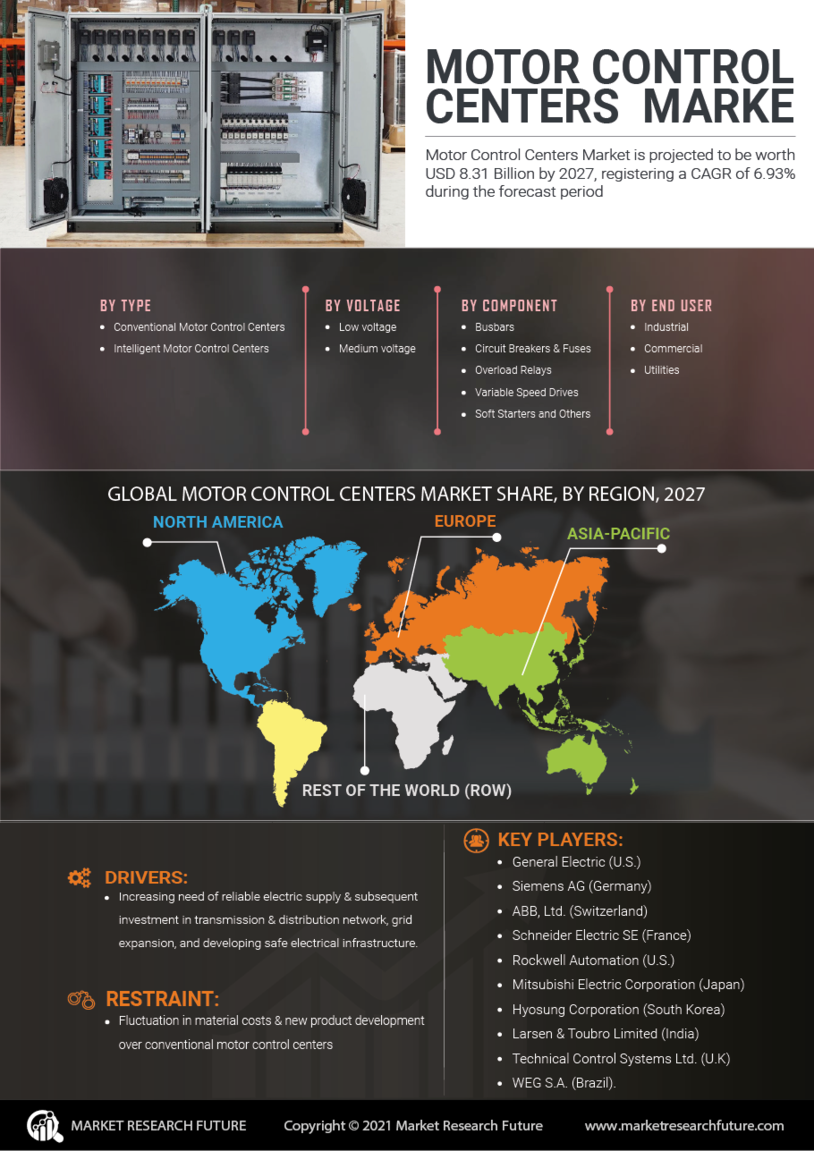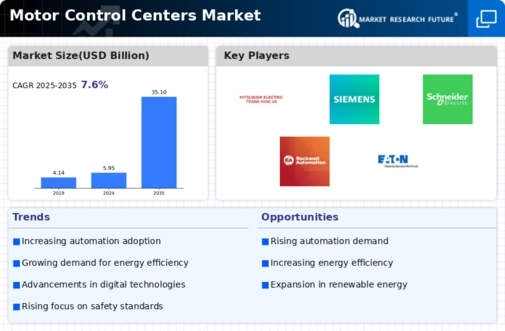Market Growth Projections
The Global Motor Control Centers Market Industry is projected to experience substantial growth over the coming years. With a market value expected to reach 5.95 USD Billion in 2024 and an impressive increase to 35.1 USD Billion by 2035, the market demonstrates a strong upward trajectory. This growth is further supported by a compound annual growth rate of 17.5% from 2025 to 2035, indicating robust demand across various sectors. The increasing adoption of automation, energy efficiency initiatives, and technological advancements are key factors contributing to this positive outlook. As industries continue to evolve, the motor control centers market is likely to play a pivotal role in facilitating operational excellence.
Rising Demand for Automation
The Global Motor Control Centers Market Industry experiences a surge in demand for automation across various sectors, including manufacturing, oil and gas, and utilities. As industries strive for enhanced efficiency and reduced operational costs, motor control centers play a pivotal role in automating processes. This trend is evident in the projected market value of 5.95 USD Billion in 2024, indicating a robust growth trajectory. The integration of advanced technologies, such as IoT and AI, into motor control centers further amplifies their appeal, allowing for real-time monitoring and control. Consequently, this increasing reliance on automation is likely to propel the market forward.
Growing Infrastructure Development
Infrastructure development is a key driver of the Global Motor Control Centers Market Industry, particularly in emerging economies. As countries invest in modernizing their infrastructure, the demand for efficient power distribution and control systems escalates. Motor control centers are essential for managing electrical systems in large-scale projects, such as transportation networks and smart cities. The anticipated growth in infrastructure spending is expected to contribute significantly to the market, with projections indicating a market value of 35.1 USD Billion by 2035. This investment in infrastructure not only enhances operational efficiency but also supports sustainable development goals, thereby reinforcing the importance of motor control centers.
Increased Focus on Energy Efficiency
The Global Motor Control Centers Market Industry is significantly influenced by the increasing focus on energy efficiency. As organizations aim to reduce energy consumption and minimize environmental impact, motor control centers are being recognized for their ability to optimize energy use in industrial applications. By employing advanced control strategies, these centers can lead to substantial energy savings. The growing regulatory frameworks and incentives for energy-efficient technologies further bolster this trend. This emphasis on sustainability is likely to drive market growth, as industries seek to comply with stringent energy regulations while enhancing their operational performance.
Expansion of Renewable Energy Sources
The expansion of renewable energy sources is a crucial driver of the Global Motor Control Centers Market Industry. As the world shifts towards sustainable energy solutions, motor control centers are essential for managing and integrating renewable energy systems, such as solar and wind power. These centers facilitate the efficient distribution and control of electricity generated from renewable sources, thereby supporting grid stability. The increasing investments in renewable energy infrastructure are expected to bolster the market, as motor control centers become integral to the transition towards a greener energy landscape. This trend aligns with global efforts to combat climate change and promote sustainable energy practices.
Technological Advancements in Control Systems
Technological advancements are reshaping the Global Motor Control Centers Market Industry, with innovations in control systems enhancing functionality and performance. The integration of digital technologies, such as cloud computing and machine learning, allows for improved data analytics and predictive maintenance. These advancements enable motor control centers to operate more efficiently, reducing downtime and maintenance costs. As industries increasingly adopt these technologies, the market is poised for substantial growth. The anticipated compound annual growth rate of 17.5% from 2025 to 2035 underscores the transformative impact of these technological innovations on the market landscape.






